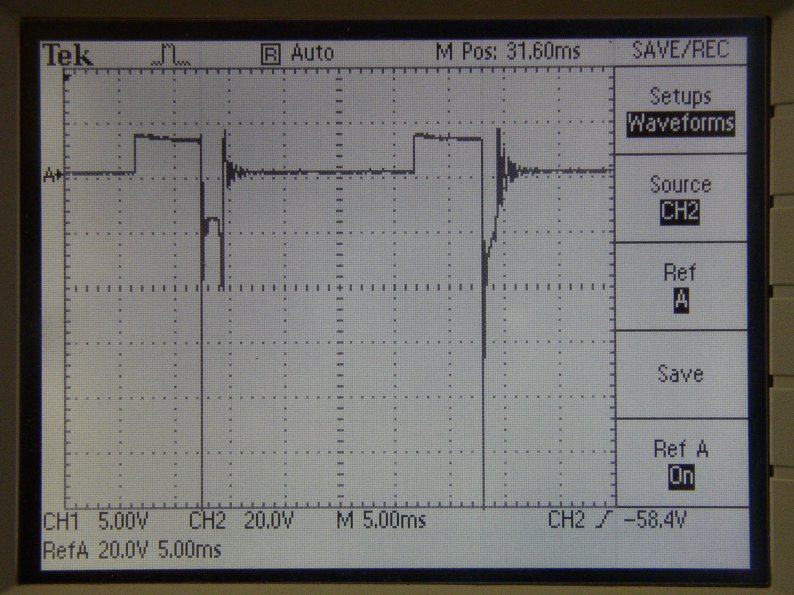Sorry to dig up an old thread, but figured I'd add some more information... the condensor doesn't suddenly discharge, except in the case that engine rpms are high enough that the points re-close before the spark is completed. The combination of the condensor and the coil forms a resonant circuit, which rapidly oscillates, with the condensor going from fully charged with a positive voltage to no charge to fully charged with a negative voltage and back and forth several times slowly decaying to nothing.
As an example, here's a 'scope display from when I showed someone what a misfire looks like:
On the first one, there's a sharp spike when the points open, a level area during the spark itself, a small peak once the spark ends, then lots of quick oscillations. (while not relevant to this discussion, the second one shows a no-spark misfire - the sharp peak happens, but rather than showing a level area as it sparks, it just decays without ever sparking)
During these oscillations (the squiggles to the right of the spark), the condensor is charged and discharged thousands of times a second with alternating polarity, slowly decaying due to resistance in the circuit.
--Bushytails








 Reply With Quote
Reply With Quote
